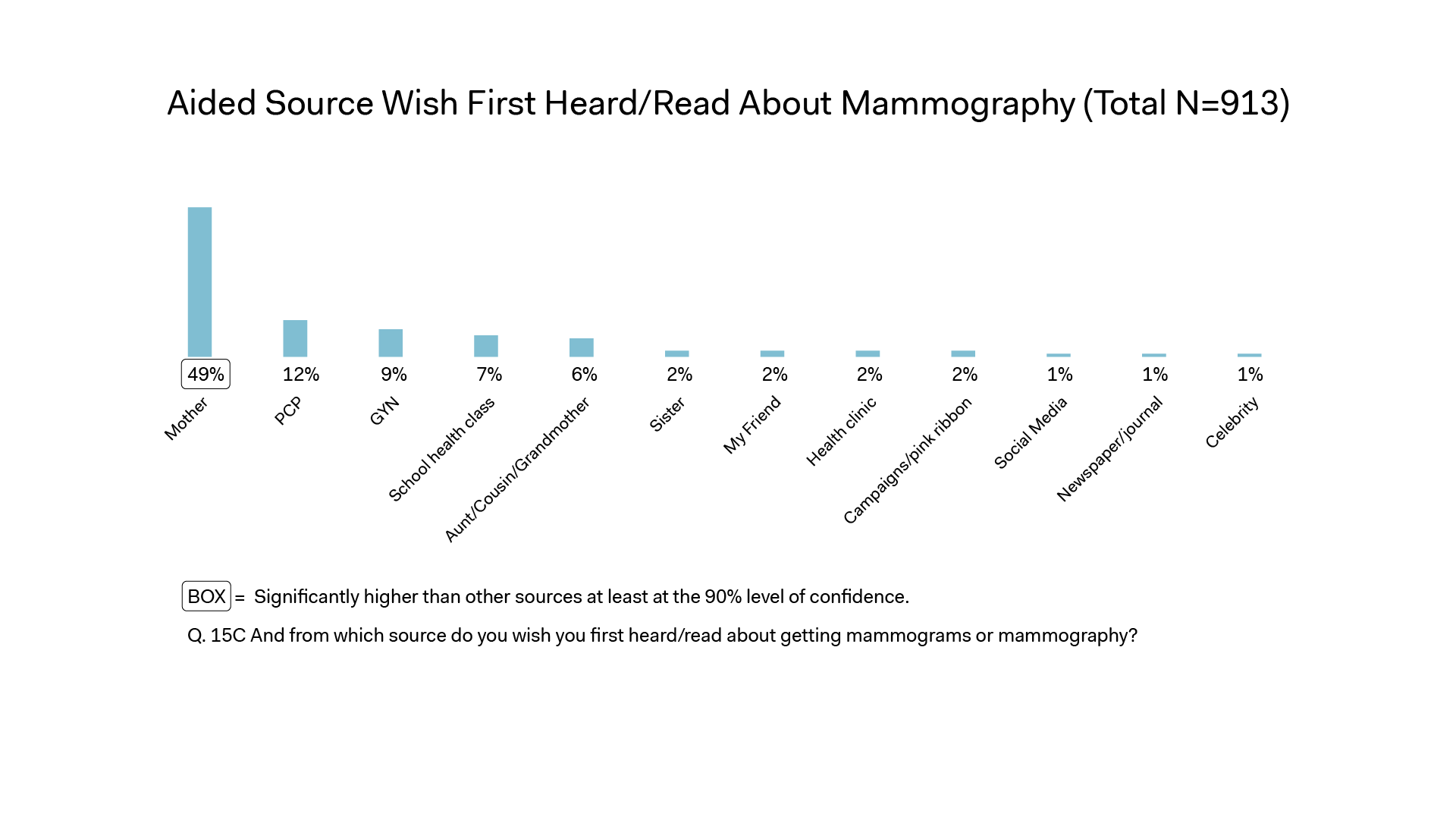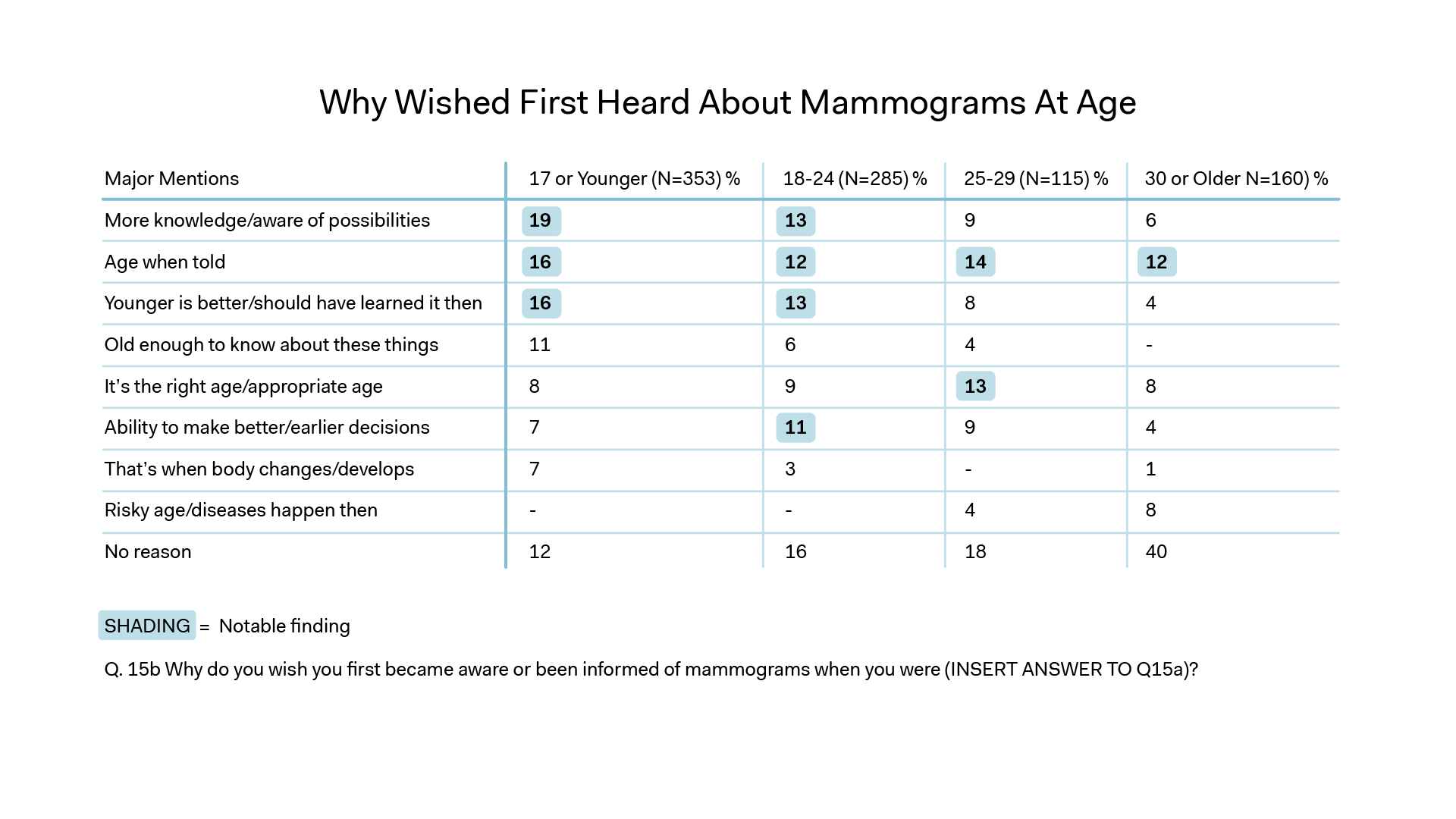It’s Time for “The Talk” (on Breast Care, of Course!)

The birds, the bees—and the boobs! Recent research shows moms are the biggest influences teens and even adult women have on learning about breast cancer.1 That’s why it’s so, so important for all the moms out there to have this critical conversation with their daughters about breast care.
Mom Knows Breast
When it comes to mammogram awareness, your daughters want to hear it from YOU. Did you know moms are not only the overwhelmingly preferred source to hear about mammograms, but their words are even more powerful than doctors?1 That’s right, your daughters are listening more than you might think! So, let’s make sure you feel prepared to be that trusted source. It could make all the difference in your daughter’s future.

![]()
Hologic, Inc.
Understanding the Patient “Doorway” to Mammography — A look into the sources of early breast cancer awareness “The earlier that women can be educated, the better it is for them. They can be prepared.”
When Should We Talk About Breast Cancer?
You might think your daughters are too young to learn about something as serious as breast cancer. Let’s not sugarcoat it, this disease IS scary. But it’s preventable thanks to early detection measures like mammograms and breast self-exams. Most women learn about mammograms at age 22.1 They wish they’d learned about mammograms and breast health at an even younger age—between 12 and 17 years old.1 Not only for themselves but also to encourage their moms to pay attention to their breast care. This is what we heard from women in our recent study1:
- “I could have started personal breast exams earlier and become better at knowing what to look for.”
- “I would have talked my mother into getting mammograms. If they found the cancer in an early stage she would probably be alive today.”
- “Those are the ages you learn about being a woman; having a monthly period and breast development.”
- “I think it is important for girls to become aware of their health needs as they go through adolescence and puberty.”

You see? Young women want to be in the know about their bodies, and they’re already taught about other changes. Why not speak about breast health? Here’s a great resource for younger girls to learn all about the disease.
Personal Risk of Breast Cancer Is Not Well Understood
Another good reason to have the breast cancer talk: Women don’t really understand their personal risk all that well—only 30% have been told their risk by their doctor.1 When it comes to perceived risk, family history mistakenly plays a big role. That’s where you come in, moms!
If you’ve gone through breast cancer, or your mom did, or your grandma, that’s crucial info for your daughters to know. You might be worried she’ll get breast cancer, too. It’s a difficult thing to talk about. Family history doesn’t automatically mean a breast cancer diagnosis, though. What it DOES do is give us the power to make informed choices about our breast health, like scheduling annual mammograms and keeping an eye out for lumps during self-exams.
Moms, you also have the opportunity to play myth-buster. Younger women tend to believe the false risk factors out there, like wearing bras with underwires or using some antiperspirants.1 We all know breast cancer is stressful enough; we don’t want anyone to be scared of fake breast news. Carve out some mother-daughter bonding time to teach your daughters all about the facts, since they want to learn from you!
The Best Time To Talk About Mammograms Is Now
Research shows that nearly half of women unfamiliar with mammograms would get one after learning all about them.1 That’s just one more reason to talk to your daughters about mammography. Give love to the mamas AND the girls—protect your health by scheduling your Genius® 3D Mammography™ exam. Only the Genius® exam finds 20-65% more invasive breast cancers compared to 2D alone.2 It can mean an earlier diagnosis and a greater variety of treatment options available to you, so you can spend time with your mothers and daughters for years to come. Click here to find a location near you.
Disclaimers: The content in this piece is for information purposes only and is not intended to be medical advice. Please contact your medical professional for specific advice regarding your health and treatment. This information may be relevant in the U.S. and other markets and is not intended as a product solicitation or promotion where such activities are prohibited. Because Hologic materials are distributed through websites, eBroadcasts and tradeshows, it is not always possible to control where such materials appear. For specific information on what products may be available in a particular country, please write to womenshealth@hologic.com.
The Genius® 3D Mammography™ exam (a.k.a. Genius® exam) is acquired on the Hologic® 3D Mammography™ system and consists of a 2D and 3D™ image set, where the 2D image can be either an acquired 2D image or a 2D image generated from the 3D™ image set. The Genius® exam is only available on the Hologic® 3D Mammography™ system. Please consult your physician for a complete list of benefits and risks associated with mammography.
Hologic, 3D, 3D Mammography, Genius, The Science of Sure, and associated logos are trademarks and/or registered trademarks of Hologic, Inc. and/or its subsidiaries in the United States and/or other countries.
SOM-01212
-
1. MISC-08197 MQD Consulting for Hologic, Mammography Patient Journey: Doorway Study, November 2021, U.S.
2. Results from Friedewald, SM, et al. “Breast cancer screening using tomosynthesis in combination with digital mammography.” JAMA 311.24 (2014): 2499-2507; a multi-site (13), non-randomized, historical control study of 454,000 screening mammograms investigating the initial impact of the introduction of the Hologic Selenia Dimensions on screening outcomes. Individual results may vary. The study found an average 41% (95% CI: 20-65%) increase and that 1.2 (95% CI: 0.8-1.6) additional invasive breast cancers per 1000 screening exams were found in women receiving combined 2D FFDM and 3D™ mammograms acquired with the Hologic 3D Mammography™ System versus women receiving 2D FFDM mammograms only.



